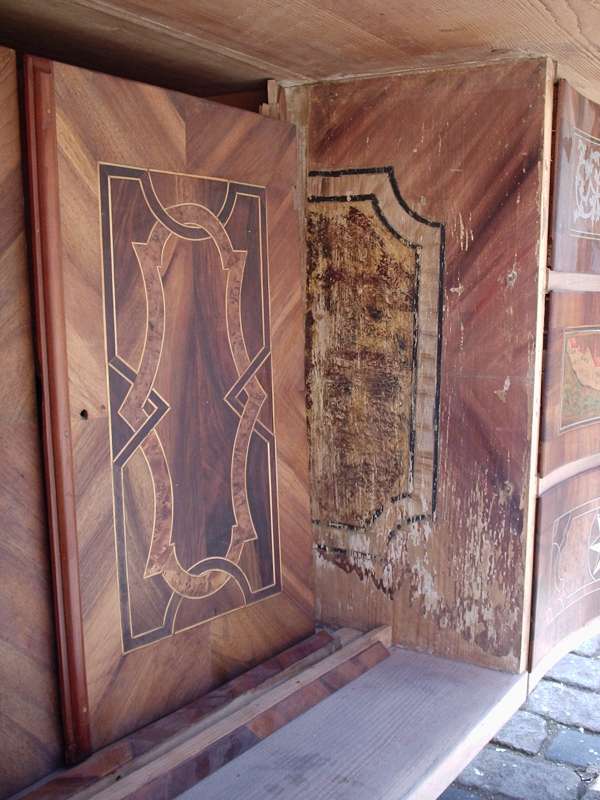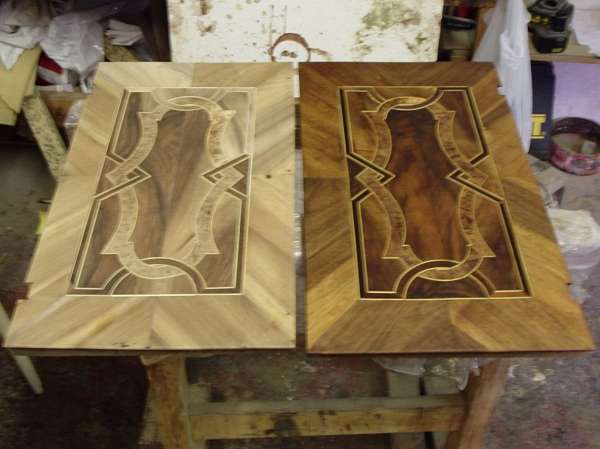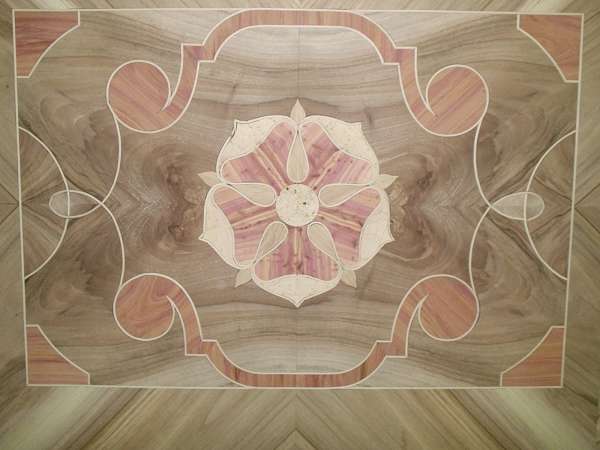Lost rose Rosenbergs
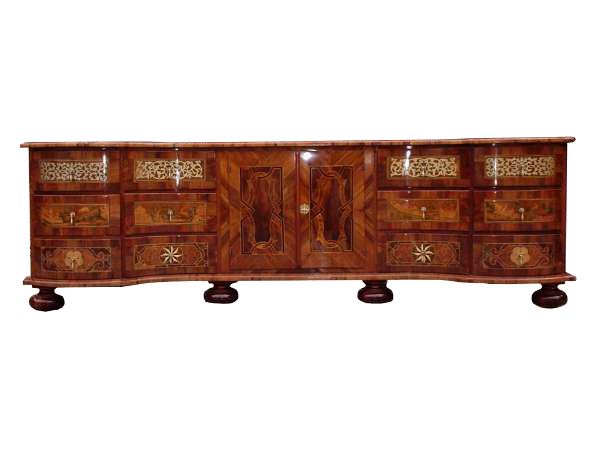
Very often we get questions, what interesting antiques we restored and which had a story, or to whom interesting personalities belonged to. Not so long ago, when we were contacted by known antique dealer that she has received a very interesting baroque dresser. At the first sight, it was clear that it was an exceptional piece. Baroque artisans showcase the full range of their skills: inlay of precious woods, marquetry of pewter and bones and painting. Moreover, the image of each manor at the forefront of drawers revealed, it is a part of representative furniture ... maybe aristocratic family? Commode was exceptional size, but in very poor condition. Actually, it was only a torso. The best preserved was the front wall with twelve drawers and double-wing door in the middle. Original upper plate is not retained at all, the entire bottom and lower back was heavily damaged by dry rot. Intarsia on the front part remained largely retained on the sides completely missing. So we were asked to renovate baroque dresser and also find out the origin and if it possible owner, dating etc.
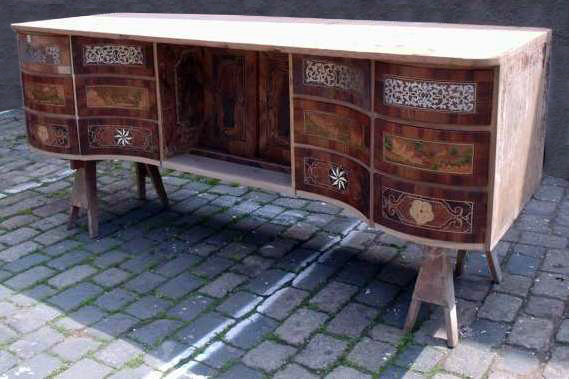
It often means long hours and days in the library of the Museum of Decorative Arts in Prague. This time, the catch was rich - it was revealed that the chest belonged to the Lords of Hradec, one of the branches of the Rosenbergs. Just they had a golden rose in the emblem on a blue field that appears at the bottom drawers. Commode probably served to representative purposes, reflecting the wealth and power of its owner. It indicates not only the coat of arms Rosenberg roses, but also paintings on the intermediate drawers - each of which displays one of the owners of the estate. Today, unfortunately, hard to find out about that particular place was. Spacious storage spaces were probably used as a hoosier cabinet. It is certain that commode never stand in the corner, it was a representative dominates the interior.
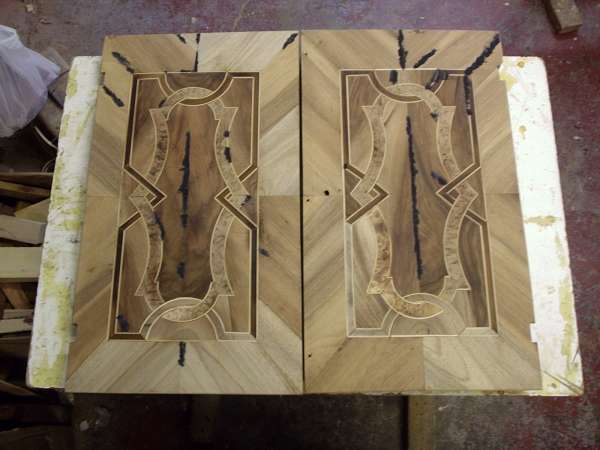
Restoration
We decompose the commode into individual parts and then we made a new bottom and top plate. Inlay and pewter marquetry on the front wall were restored and supplemented. On the sides the inlay didn´t survived, but when it was removed "figured wood", there were drawings, which baroque craftsmen made before they started with inlays. According to them, we reconstructed the original form of marquetry, which was very similar to the door. The biggest challenge was the top board. "It was mostly destroyed first - used to stand on it heavy candlesticks supplemented by mirrors that reflect light into the room" Due to the size dressers, it was clear that the upper plate had to be divided into three parts. "The middle part has always been central, so there should be the most complicated pattern.“ "When designing new inlays we came out of solution of front wall commode. Both edge field repeating pattern from the doors and the sides of commode, in center field, we placed the motive armorial Rosenberg rose.“ The middle inlay is very rich, the basis is from walnut wood, motif rose is from lilacs, there's even red wood of plum, maple, oak , rose or light and dark burr. All in about five millimeters thick. "Work on the inlays are always starts from the center and gradually added more and more areas. Each part of the inlay is cut from one piece of wood- basically you can not make a mistake, otherwise you can throw all the rare veneer away ". All materials and techniques that we use in the studio, of course, are original - bone glue, linseed oil varnish, gloss French polish.
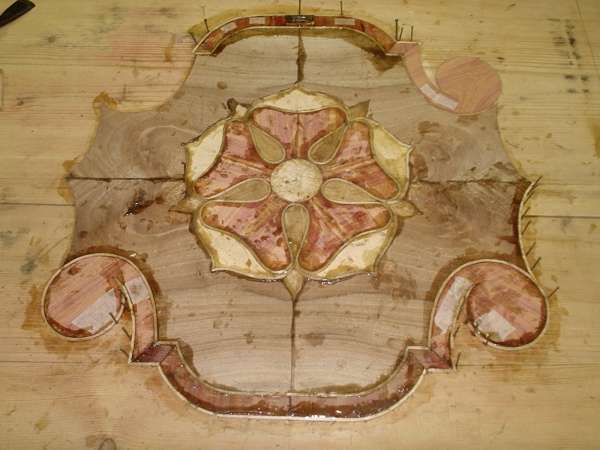
After completing the work, owner was enthusiastic, and a representative piece of Baroque participated on the fair with antiques. Despite the price of antique furniture with a wonderful history, it attracted the attention. Several candidates from the ranks of private collectors, as well as several institutions expressed an interest of her. The final price was then even higher than expected. With the words "A HISTORY MAY CONTINUE"
TEAM STUDIO FIALA





